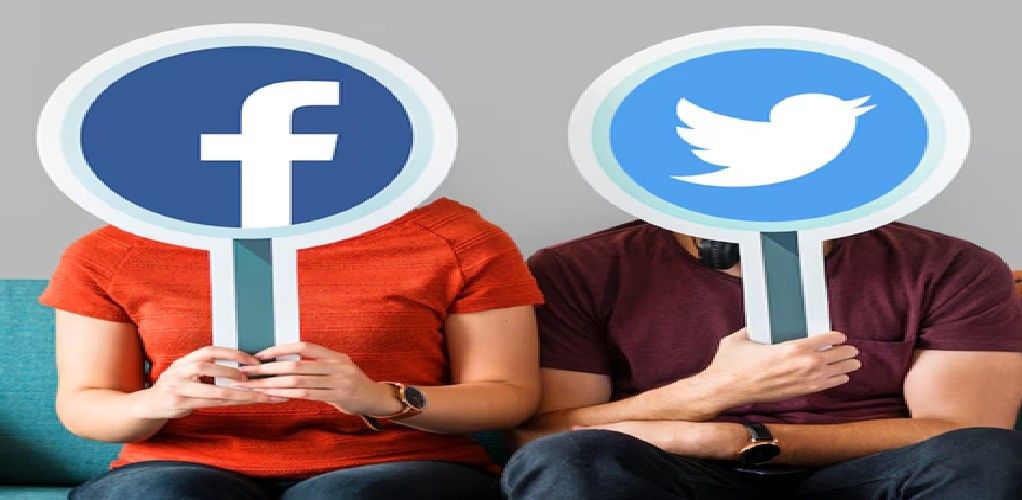
In the ever-evolving landscape of digital marketing, selecting the right social media platform is crucial for achieving your business objectives. Facebook and Twitter, two of the most prominent social media platforms, offer distinct features and user demographics that can significantly impact your marketing strategy. This comprehensive analysis delves into the key aspects of both platforms to help you determine which aligns best with your marketing goals.
Understanding the Platforms
Facebook: A Hub for Community and Content
With nearly 3 billion monthly active users, Facebook stands as a colossal platform for marketers. It caters to a diverse audience, encompassing various age groups, interests, and geographical locations. The platform's features, such as Groups, Events, and Marketplace, facilitate community building and direct interaction with users.
Twitter: The Pulse of Real-Time Conversations
Twitter, with over 300 million active users, is renowned for its real-time communication and trending topics. The platform's concise format encourages quick updates, immediate feedback, and viral content dissemination. It's particularly effective for brands aiming to engage in timely discussions and capitalize on current events.
User Demographics and Behavior
Facebook: Diverse and Engaged Audience
Facebook's user base is extensive and varied. The platform appeals to a broad demographic, including younger users and a significant number of seniors. This diversity allows businesses to target a wide range of audiences through tailored content and advertisements.
Twitter: Younger and More Active Users
Twitter's audience skews younger, with a substantial portion of users aged 18-29. The platform is also popular among professionals and thought leaders, making it ideal for B2B marketing and industry-specific discussions.
Features and Functionality for Marketers
Facebook: Rich Multimedia and Targeting Capabilities
Facebook offers a variety of content formats, including text posts, images, videos, and live streams. Its advanced targeting options enable advertisers to reach specific demographics based on interests, behaviors, and location. Additionally, Facebook's algorithm favors content that generates meaningful interactions, promoting organic reach.
Twitter: Real-Time Engagement and Hashtag Utilization
Twitter's strength lies in its real-time engagement and the use of hashtags to join global conversations. The platform supports various content types, such as tweets, images, videos, and polls. Its trending topics feature allows brands to participate in or initiate discussions on current events, enhancing visibility.
Advertising Capabilities Comparison
Facebook Ads: Cost-Effective and Versatile
Facebook's advertising platform is known for its cost-effectiveness, with a cost per impression averaging around $0.59. Advertisers can choose from various ad formats, including carousel ads, video ads, and sponsored posts, to achieve diverse marketing objectives. The platform's robust analytics tools provide insights into ad performance, enabling data-driven decisions.
Twitter Ads: Premium Reach with Higher Costs
Twitter's advertising costs are higher, with a cost per impression averaging about $3.50. However, the platform offers unique ad formats like promoted tweets, trends, and accounts, which can drive significant engagement. Twitter's real-time nature allows for immediate feedback and rapid campaign adjustments.
Content Formats: What Works Best?
Facebook: Long-Form and Interactive Content
Facebook supports a variety of content formats, including long-form posts, live videos, and interactive polls. This versatility allows brands to engage users through storytelling, tutorials, and community-driven content.
Twitter: Concise and Timely Updates
Twitter's character limit encourages concise messaging, making it ideal for quick updates, announcements, and engaging in trending conversations. The platform's real-time nature is advantageous for time-sensitive promotions and event marketing.
Engagement Potential: Community and Interaction
Facebook: Building Communities and Customer Loyalty
Facebook's Groups feature enables brands to create communities around their products or services, fostering customer loyalty and advocacy. The platform's algorithm prioritizes content that generates meaningful interactions, enhancing organic reach.
Twitter: Direct Interaction and Brand Personality
Twitter facilitates direct communication between brands and consumers, allowing for quick responses and personalized interactions. This immediacy helps humanize brands and build stronger customer relationships.
Analytics and Performance Tracking
Facebook: Comprehensive Insights
Facebook provides detailed analytics on post performance, audience demographics, and engagement metrics. These insights help marketers refine their strategies and optimize content for better results.
Twitter: Real-Time Metrics
Twitter offers real-time analytics, allowing brands to monitor campaign performance and audience engagement as it happens. This immediacy is beneficial for adjusting strategies on the fly.
Which Platform Suits Your Goals Best?
The choice between Facebook and Twitter depends on your specific marketing objectives:
- Brand Awareness: Facebook's extensive reach and diverse content formats make it ideal for building brand awareness among a broad audience.
- Customer Engagement: Twitter's real-time interaction and concise messaging are effective for engaging with customers and participating in trending conversations.
- Lead Generation: Both platforms offer robust advertising tools, but Facebook's advanced targeting options may provide a more cost-effective approach for lead generation.
- Event Promotion: Twitter's real-time nature is advantageous for promoting events and engaging with attendees during live events.
Trends Shaping Facebook and Twitter Marketing in 2025
As we move into 2025, several trends are influencing marketing strategies on both platforms:
- Increased Integration of AI and Automation: Both platforms are incorporating AI to enhance user experience and advertising effectiveness. Marketers should leverage these technologies to optimize campaigns.
- Emphasis on Video Content: Video continues to dominate social media, with both platforms prioritizing video content in their algorithms. Brands should invest in high-quality video production to capture audience attention.
- Enhanced Ecommerce Features: Facebook is expanding its e-commerce features, allowing businesses to sell products directly through the platform. This integration streamlines the shopping experience, enabling users to discover and purchase products without leaving the app. Such features are expected to enhance user engagement and provide brands with new revenue streams.
Conclusion
In 2025, both Facebook and Twitter offer unique advantages for marketers. Facebook's extensive reach, advanced targeting capabilities, and diverse content formats make it a powerful platform for building brand awareness and fostering community engagement. Twitter's real-time communication, concise messaging, and active user base are ideal for timely updates, customer interaction, and participating in trending conversations.
The choice between Facebook and Twitter should align with your specific marketing objectives, target audience, and content strategy. By understanding the strengths and nuances of each platform, businesses can craft effective marketing campaigns that resonate with their audience and achieve their goals.
Published on January 1, 1970

